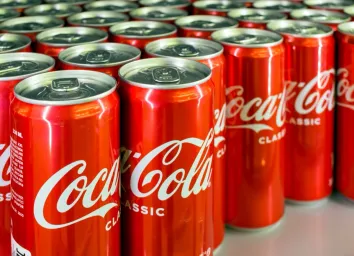5 Tricks for Making Your Wine Last Longer Once It’s Opened
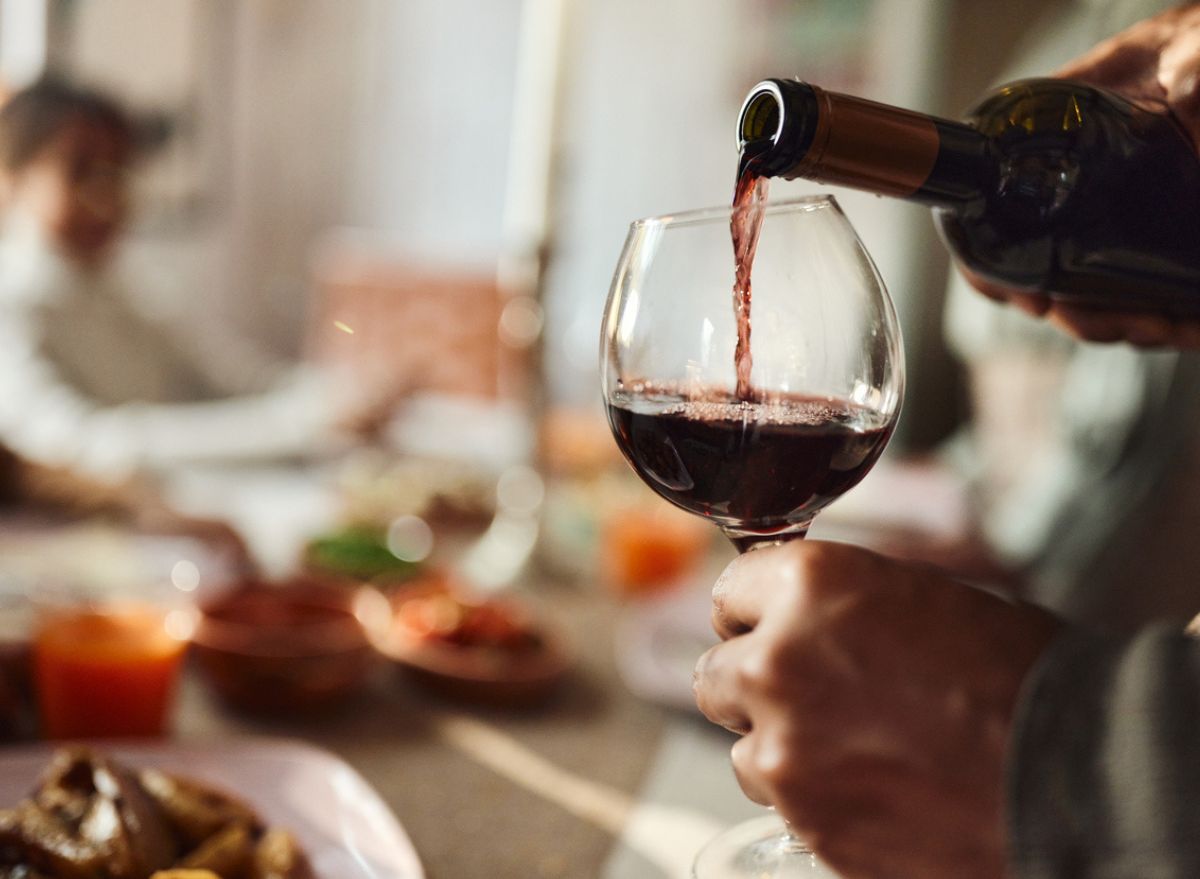
An unopened bottle of wine can last years, with most getting even better with age. However, as soon as you open the bottle, you’re drastically shortening this alcoholic beverage’s lifespan. When you’re sharing your favorite cabernet sauvignon with your guests at a dinner party, or bringing a light, crisp pinot grigio to your friends’ picnic and planning to finish the whole bottle, this shouldn’t be an issue. But for those nights when you want just a glass or two, it can feel like you’re wasting the rest of the bottle or sacrificing taste if you don’t finish it immediately. Thankfully, if you know what to do, you can easily make your wine last longer once it’s already been opened.
Before we get into the tips and tricks of making wine last longer, it’s best to understand why this type of alcohol goes bad so quickly once it’s opened. Wine is made from fermented grape juice, which is a process that involves yeast that converts the sugars in the juice to ethanol (alcohol) and carbon dioxide (bubbles!). Inside the unopened bottle, fermented wine can last a long time. But once you remove the cork, the drink instantly becomes exposed to oxygen, beginning a process known as “oxidation.” This can cause the wine to go bad more quickly.
Once exposed to oxygen after you remove the cork or cap, wine can become bitter, the antioxidant concentration and certain volatile compounds that contribute to the aroma of the wine will decrease, and the color can change. Sadly, even if you do place the cork back in the bottle, wine can still go bad at a fast rate.
To reduce the effects of oxidation and slow down the process of your favorite vino going bad, we talked with experts and sommeliers to get their best tips and tricks. Read on, and for more, make sure to check out Is Red Wine Good for You?
1. Store it in the refrigerator
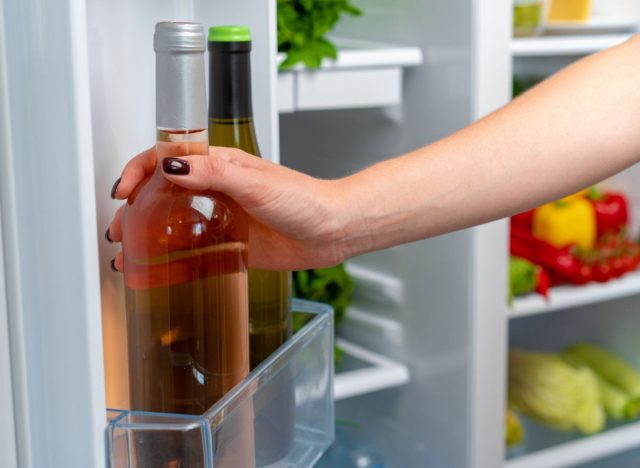
In a perfect world, you’d have your very own cold, dark wine cellar to keep all of your favorite bottles. But since that isn’t accessible to most people, your refrigerator becomes the next best thing. Because of the oxidation process we previously mentioned, this drink begins to go bad once it’s opened. However, keeping it in cool temperatures is helpful, because according to Laura Raimondi, owner at La Sicilyana Wines, “warmer temperatures can speed up oxidation.”
“What the refrigerator does is slow down the inevitable degradation of the wine once it has been opened,” says Joe Mele, co-host of the podcast The Wine Pair Podcast. “The temperature truly makes all the difference.”
For storing reds and whites in the fridge, the first thing you should try to do is put the same cork back in the bottle. If the cork is ruined or doesn’t go back in, you can use a rubber cork.
The shelf life for opened wine in the fridge “is about 3 days for reds, and 5 days for whites,” says Matt Delgado, Food + Beverage Director and sommelier at Panzano, an Italian restaurant in Northern Colorado. Mele adds that even though most red and white wines will last 3-5 days in the fridge, “the exception is sweet wines, which should be good for several weeks.”
This is obviously easy to do with bottles that are supposed to be served chilled—such as a white or rosé—but what about a nice red? Chances are you don’t want to serve your best pinot noir cold, but thankfully, all you have to do is “take red wine out of the fridge for at least 20 minutes before you plan to pour it again,” says Audrey Wayne, level III sommelier who goes by The Single Somm on TikTok.
2. Use plastic wrap for sparkling wine
The next piece of advice isn’t going to feel fancy, but it will certainly give you more time with your opened bottle of wine. “For sparkling bottles, since the cork will not go back in, use plastic wrap sealed with a rubber band,” says Mele. “It keeps the bubbles fizzing and the oxygen from entering the bottle, and if you don’t have the cork for your red or white wine, the plastic wrap works great for them, too.”
Mele also notes that this makeshift technique can work even better than using the original cork, “because the cork is quite porous.”
3. Transfer leftover wine to a smaller bottle
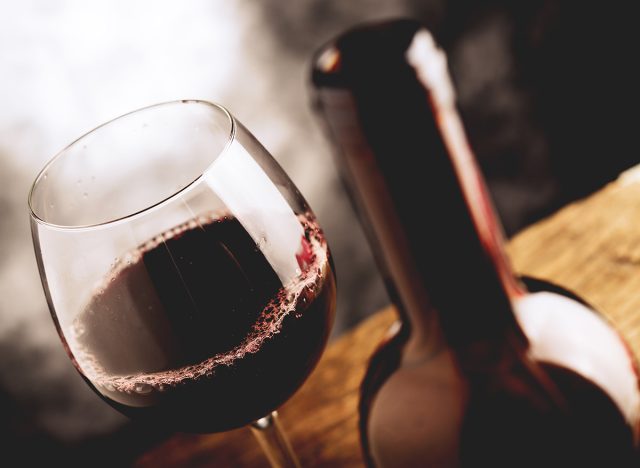
If you only drink a little bit of your wine, experts suggest transferring the rest to a smaller bottle or container. By minimizing the surface area of the wine that’s exposed to oxygen, you can slow down the degradation process.
This tip requires a bit more work and planning ahead to make sure you have a spare bottle on hand, but it can make all the difference if you’re trying to save the rest of your wine for later. If you only drink a portion of wine from the bottle, “It is worthwhile to transfer the remaining wine into a smaller bottle,” says Raimondi. “Half bottles or even smaller ones are perfect to reduce the air space above the wine, which limits exposure to oxygen, helping to retain the wine’s quality.” If you don’t have a small wine bottle, a glass jar also works.
Once you’ve transferred the remaining wine to a smaller bottle, you can then place it in the fridge and store it there.
4. Invest in a wine pump
If you don’t want to transfer your wine to another bottle, Wayne suggests using a wine pump to remove as much of the excess oxygen left in the bottle as you can. “My best advice for making wine last longer is to invest in a wine pump. You can find them online or at wine shops, or even at some grocery stores,” says Wayne.
But how exactly does a wine pump work? “Oxygen is what spoils your wine, so you want to limit the amount of oxygen touching your wine. If you open a bottle and drink most of it, all that bottle space becomes oxygen ready to make your wine taste worse at a faster rate,” says Wayne. “But a wine pump takes the oxygen out of the bottle with a few quick pumps, rather than trying to find a new vessel to put the wine in.”
5. Get a champagne stopper
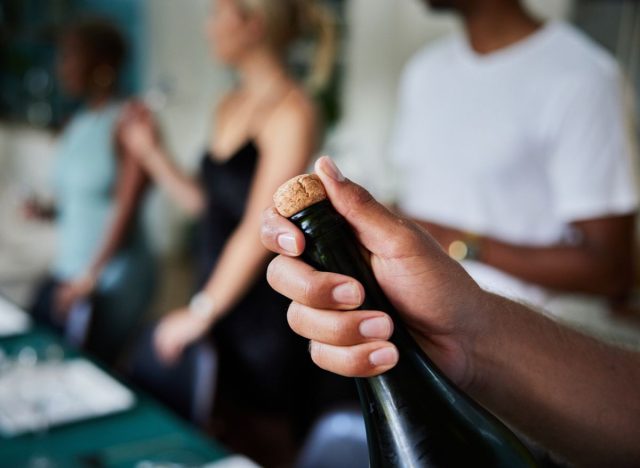
For those who love a celebratory champagne moment, you may benefit from investing in a champagne stopper. Once you’ve popped the cork on the champagne, it’s impossible to put the same one back in the bottle. That’s why Wayne suggests getting a stopper specifically for bubbly vinos to both prevent the wine from going bad and from going flat.
“You can’t put a regular stopper in the bottle, because the pressure from the bubbles is still there and will force the standard stopper out, potentially breaking something in your kitchen,” she says. Instead, a champagne stopper works by closing on the top of the bottle, and actually expanding and tightening as the pressure builds inside. This keeps the stopper from flying out of the bottle.
Raimondi adds that using a champagne stopper and placing the bottle back in the fridge should work just fine, as “the pressure inside the bottle will help keep it carbonated, and the cold will slow down oxidation,” she says. “However, due to their delicate nature, sparkling wines should still ideally be consumed within one to two days.”


